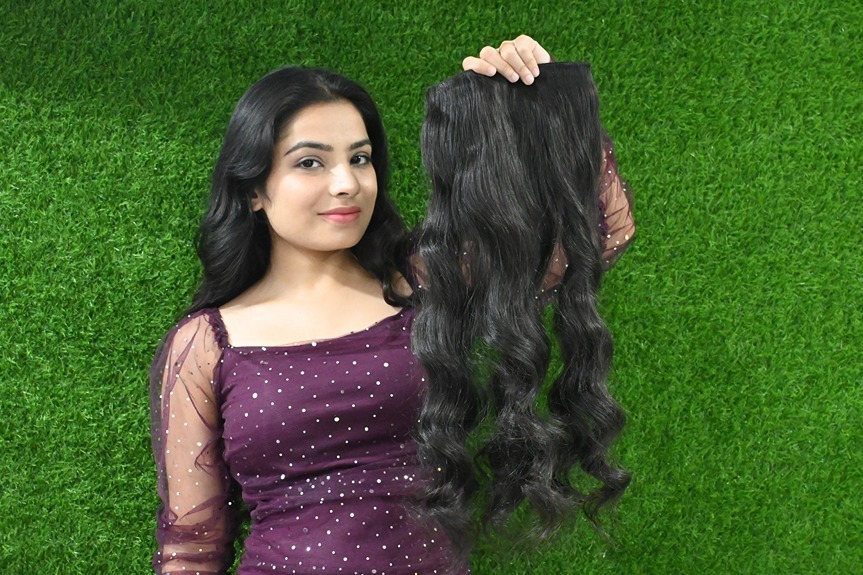Wearing a wig can be empowering, stylish, and practical—whether you’re dealing with hair loss, changing up your look, or simply craving a low-maintenance alternative to daily hairstyling. However, one of the most common concerns among wig wearers, especially beginners, is how to make a wig look as natural as possible. The goal is simple: no one should be able to tell you’re wearing a wig unless you choose to share that detail.
While modern wigs—both synthetic and human hair—have come a long way in realism, achieving a seamless, natural appearance still requires the right styling techniques, care routines, and product use. In this guide, we’ll walk you through essential tips and tricks to make your wig blend effortlessly with your scalp, hairline, and facial features, so you can wear it with total confidence.
Start With the Right Wig: Cap Construction and Hair Type Matter
A natural look begins with choosing the right wig. Not all wigs are created equal, and the construction of the wig cap plays a vital role in how realistic it will appear when worn.
Lace Front Wigs are among the most popular options for achieving a natural hairline. These wigs have a lace strip at the front where the hair is hand-tied, mimicking the way hair naturally grows from the scalp. When trimmed and blended properly, lace fronts give the illusion that hair is growing directly from your skin.
Full Lace Wigs take things a step further. These wigs are constructed entirely from lace, allowing for more styling flexibility and parting options. Because each strand is individually tied, these wigs are breathable, versatile, and ultra-realistic—but they do come at a higher price.
Monofilament Wigs offer a soft, mesh-like material at the crown or top of the wig. The individual hand-tied strands allow for multidirectional parting and create a scalp-like effect. These are ideal for people with sensitive scalps or partial hair loss.
When it comes to hair type, human hair wigs offer the most natural look, feel, and styling options. While high-quality synthetic wigs can still appear realistic, especially if pre-styled, they’re generally less flexible in terms of heat styling or customization.
Trim the Lace Properly
When wearing a lace front or full lace wig, trimming the lace correctly is essential to avoid a visible edge. Use small, sharp scissors to trim the lace close to the hairline, but be careful not to cut too close to the hair knots. Follow the natural curves of your hairline and avoid a straight cut—subtle, jagged movements with the scissors create a more natural finish that blends into your skin better.
Take your time during this step. Once the lace is trimmed, it can’t be undone. Always cut less than you think you need to and go back in for further trimming if necessary.
Blend with Your Skin Tone Using Foundation or Tint Spray
After trimming the lace, the next step is to match it with your skin tone. Use a small makeup brush or sponge to apply a bit of foundation, concealer, or lace tint spray that matches your complexion directly onto the lace. This helps camouflage the lace and makes it blend seamlessly with your forehead and scalp.
Many wig wearers also apply some product underneath the lace to hide the wig cap or knots. A light dusting of translucent powder or pressed foundation over the parted area and hairline can dramatically enhance the illusion of scalp.
Secure the Wig for a Flat, Firm Fit
Even the most realistic-looking wig won’t look natural if it shifts or lifts while you’re wearing it. Making sure your wig lays flat against your head is crucial for achieving a realistic look. There are several methods to secure a wig, and you can choose one based on your lifestyle and comfort level:
- Wig Grip Bands: A soft, adjustable band worn under your wig that helps keep it in place without glue or clips.
- Wig Caps: These provide a barrier between your natural hair and the wig while offering extra hold.
- Wig Tape or Glue: For a more secure, long-lasting hold, especially useful for lace front and full lace wigs.
- Combs and Adjustable Straps: Built into many wigs to help keep them tight and secure.
Always ensure your natural hair is flat and evenly braided or tucked away beneath the wig cap to prevent lumps and bumps.
Customize the Hairline and Parting for Realism
Straight-from-the-box wigs often come with uniform, dense hairlines and pre-set parts that can look unnatural. Plucking the hairline with tweezers to thin it out slightly helps mimic the irregular density of a real hairline. Focus on softening the edges and creating a slightly uneven contour to reflect how natural hair grows.
Similarly, adjust the parting to suit your face shape and preference. If the wig allows for parting, try a side or zigzag part instead of a sharp middle line. Applying a small amount of concealer along the part can make the “scalp” look more realistic.
Style It Like Real Hair
Wigs, especially human hair ones, can be styled just like your natural hair. Use heat tools sparingly to curl, straighten, or wave your wig for added realism. If using a synthetic wig, make sure it’s labeled as “heat-friendly” before applying any heat.
Adding light layers or trimming the ends slightly can also make the wig look more like your real hair. If you’re not confident in your cutting skills, take the wig to a professional stylist who has experience working with wigs.
Adding accessories such as a headband, scarf, or sunglasses can also make the overall look more believable and stylish.
Keep It Clean and Conditioned
A clean wig not only looks better but also moves more naturally. For human hair wigs, wash and deep condition every 8–10 wears using sulfate-free shampoo and moisturizing conditioners. Synthetic wigs require fewer washes, usually after every 15–20 wears, and should be cleaned using wig-specific products.
Always let the wig air dry on a stand to maintain its shape. Detangle gently from ends to roots using a wide-tooth comb or wig brush to avoid damaging the fibers.
Using a lightweight wig serum or leave-in conditioner can help reduce frizz and increase shine, which contributes to a more natural appearance.
Match Your Wig to Your Natural Features
One way to make a wig look more natural is by choosing styles and colors that complement your natural features—especially as a beginner. Opt for a wig color close to your own, or something within one or two shades. Also, consider choosing a style that mimics your previous haircut or texture for a more seamless transition.
Once you’re more experienced and confident, you can begin experimenting with bolder colors and styles, knowing how to make them look natural regardless.
Final Thoughts
Making a wig look natural is part technique, part customization, and part choosing the right foundation to start with. By understanding the importance of cap construction, proper lace trimming, realistic hairline tweaks, and maintenance routines, you can transform any wig—whether synthetic or human hair—into a beautiful, believable part of your everyday look.
Wigs should never feel like a mask—they should empower you to feel your best, whether you’re wearing one for fashion, function, or freedom. With a little effort and practice, anyone can achieve a flawless, natural finish that turns heads for all the right reasons.

